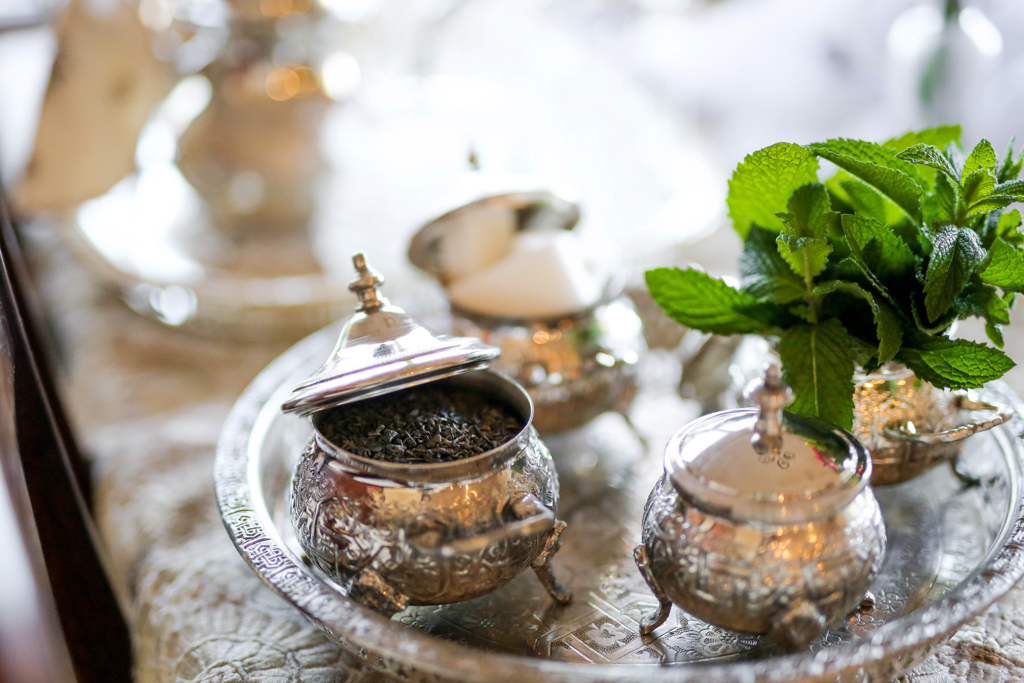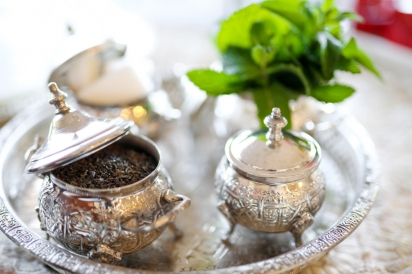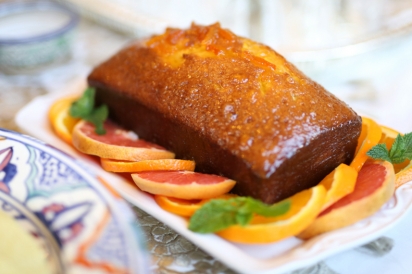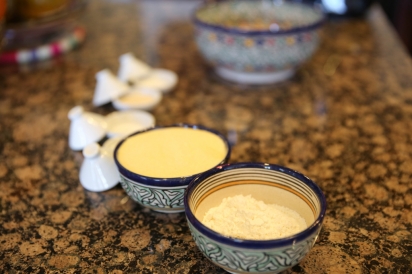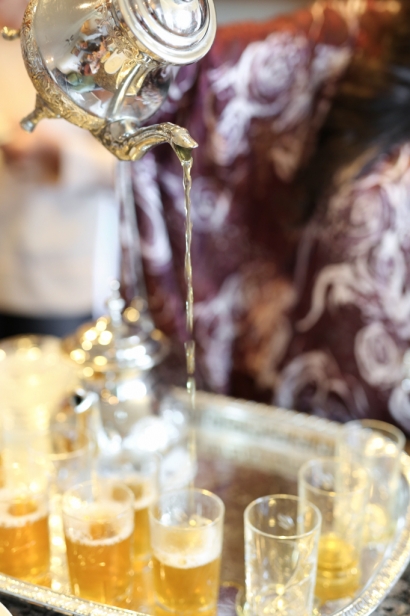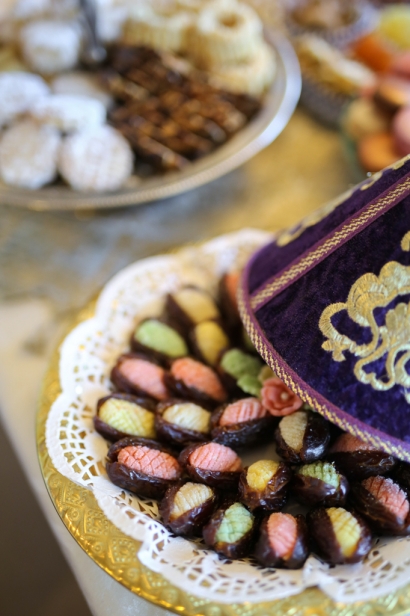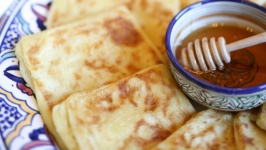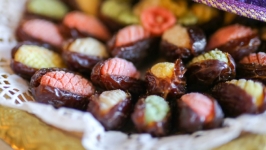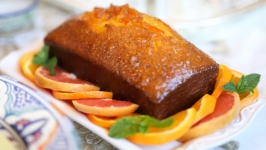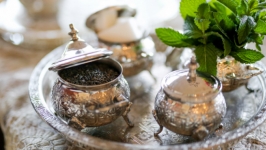A Moroccan Tea Party
It’s a chilly Sunday afternoon in Pennsylvania but the sun is piercing through the clouds, warming up Myriem Nachaiti’s living room. Dressed in a lilac-colored caftan, she’s welcoming a group of eight girlfriends for what her Evite described as a “Moroccan tea ceremony.” On the black kitchen island, she has set two shiny, silver-plated teapots on a matching rectangular tray. Shaped like small snakes, the teapots' gooseneck spouts reflect the sun rays, attracting the gaze of curious guests.
After introducing her friends to one another, Myriem gathers us around the kitchen island for a lesson in Moroccan tea. Moroccan tea, she explains, is meant to be sweet and, while the brew relies on only a handful of ingredients, the preparation involves several steps performed as part of an elaborate choreography.
First, Myriem covers the pellets of gunpowder tea with boiling water, which she steeps for a few seconds. “This water is meant to open up the leaves”, she explains, “but you keep it aside because it’s full of flavor.” The guests are growing silent as she pours more water on the tea. “This water is meant to clean the leaves, so you have to dump it.” As mint and sugar get into the pot, Myriem warns that “you never stir the sugar with a spoon, but pour the tea into a cup and put it right back in the teapot and do it again until the sugar is dissolved.” Teabags have never felt more distant.
While the tea’s steeping, Myriem answers her friends’ questions about the ingredients: what kind of mint is this? What is gunpowder? Where can we find it? After a few minutes, the tea’s ready to be served. Myriem lifts the teapot higher as she pours the brew into small glass cups. The tea falls into a sweet cascade, leaving behind a trail of smoke and a layer of foam on the surface of each cup. The drink is refreshing, with the perfect balance of bitter and sweet: I am in line for another cup.
Originally from Morocco, Myriem comes from a long line of accomplished cooks who love to entertain. Her tight-knit family often gathered in her mom’s Casablanca kitchen where tea and conversation flowed freely. It’s the atmosphere of those gatherings she’s trying to recreate today, and the reason she brought her tea set when moving to the United States in 2008.
The pastries she prepared for today’s gathering are a testament to the hours spent in the kitchen with her mother and grandmother. On the living room table, she has displayed dates stuffed with colorful almond paste, a platter of baghrir or thousand-hole crêpes, as well as msemen, the square, flaky flatbreads she learned to make in her teens. As for the citrus cake, it’s a French inspired cake she developed in her American kitchen.
The guests surround the table with a mixture of curiosity and excitement at the diversity of pastries. The table is elaborately decorated but this busy mother of two is also a practical cook who knows the shortcuts to a low stress party. For instance, she prepared the msemen earlier that week and kept them in the freezer until that Sunday. Oh, and the plate of pretty macarons? She bought them frozen.
A few guests have left the party, but Myriem has gathered her remaining friends on the couch and poufs. She is in no rush to send the guests home because “there is no end time for a Moroccan party.” As the sun starts setting, the last guests started leaving, she hands everyone plates to bring pastries back. Myriem is passionate about Moroccan cooking and she wants to get Americans excited about it. Judging from what’s left on the table, I think she’s succeeding.


